Related Content
- Jurisdiction
- Equitable Jurisdiction
- Venue
- Class action
- Class Representative
- Individual plaintiffs
- Defendant Scottish Power
- Defendant PacifiCorp
- Defendant PPM Energy Inc.
- Scottish Power and commercial wind power development
- Defendant Greenlight Energy Inc.
- Sale of Elk River Windfarms LLC
- Defendant The Empire District Electric Company
- The Empire District Electric Company and the Elk River Project
- The Flint Hills Ecoregion
- Flint Hills Endangered Flora & Fauna
- The Native Prairie Grasslands
- Tallgrass Prairie National Preserve
- Legislative History: Tallgrass Prairie National Preserve
- The Konza Prairie Site
- The LTER Program
- The Prairie Parkway
- The Flint Hills Scenic Byway
- Flint Hills Scenic Resources
- International recognition of the Tallgrass Prairie
- Birds of the Tallgrass Prairie
- Tourism
- Beneficial impacts of tourism
- Economic impacts of tourism
- The Blue Ridge Parkway Experience
- Serious, permanent & irreparable damage
- Wind turbines kill birds of prey
- Wind turbine development destroys habitat
- Wind turbine development damage
- Damage to quality of life
- Wind turbines: an economic catastrophe
- Tax avoidance and subsidies
- Voodoo economics of wind turbine power
- Catastrophic wind turbine failures
- The Electric Power Grid
- The prayer for relief
International recognition
100. The Flint Hills Regional Environmental System of Kansas/Oklahoma is an “important bird area” of statewide, national, hemispheric and international importance, and it deserves this designation along with two other areas in the state that have received formal international recognition as “Ramsar” sites. Those sites are Cheyenne Bottoms and Quivira National Wildlife Refuge, west of the Flint Hills.
100.1 The Convention on Wetlands, signed in Ramsar, Iran, in 1971, is an intergovernmental treaty which provides the framework for national action and international cooperation for the conservation and wise use of wetlands and their resources. There are presently 144 Contracting Parties to the Convention, with 1401 wetland sites, totaling 122.8 million hectares, designated for inclusion in the Ramsar List of Wetlands of International Importance.
100.2 “The Convention’s mission is the conservation and wise use of all wetlands through local, regional and national actions and international cooperation, as a contribution towards achieving sustainable development throughout the world”
Birds of the Flint Hills Tallgrass Prairie
101. It has been well-established through long-term monitoring that the grassland birds of North America, as a habitat-based species suite, have been undergoing steeper and more consistent population declines than any other group of birds on the continent. This measured decline over the last few decades builds on a century of population loss that accompanied nineteenth and twentieth century alteration of the Great Plains.
101.1 The following photographic exhibit is a fair and accurate representation of a Prairie Falcon, one of the raptors in serious danger from industrial wind turbine commercial electric power generation facilities and their associated transmission lines.
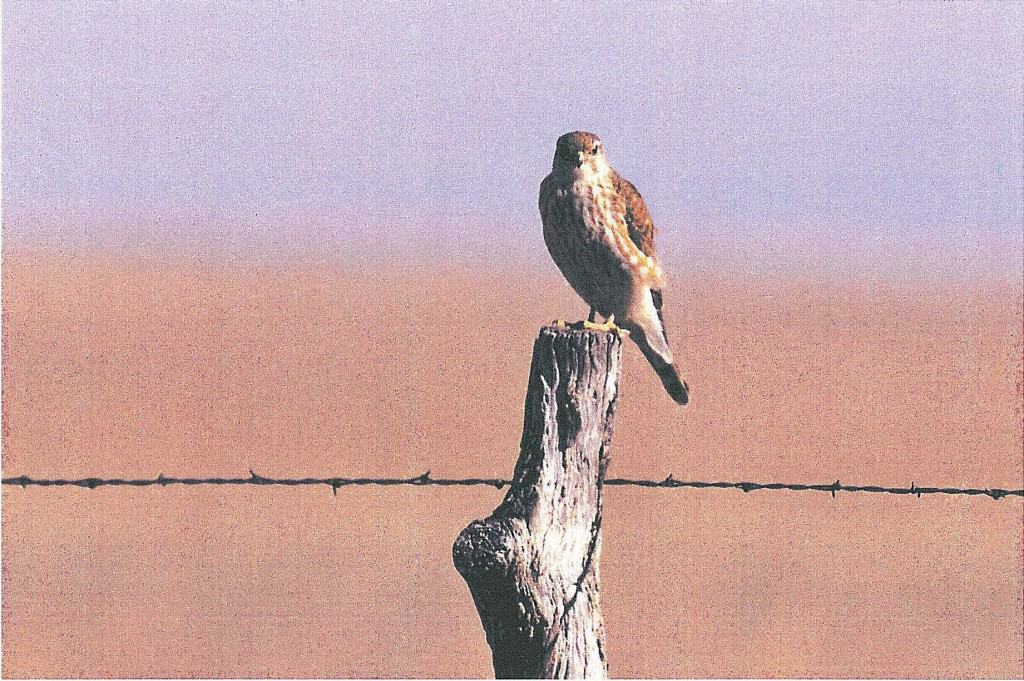
101.1 Prairie Falcon
102.1 The following photographic exhibit is a fair and accurate representation of a Barred Owl, one of the species of bird that will suffer serious, permanent and irreparable damage from industrial wind turbine commercial electric power generation facilities in the Flint Hills Tallgrass Prairie Regiona Ecosystem.
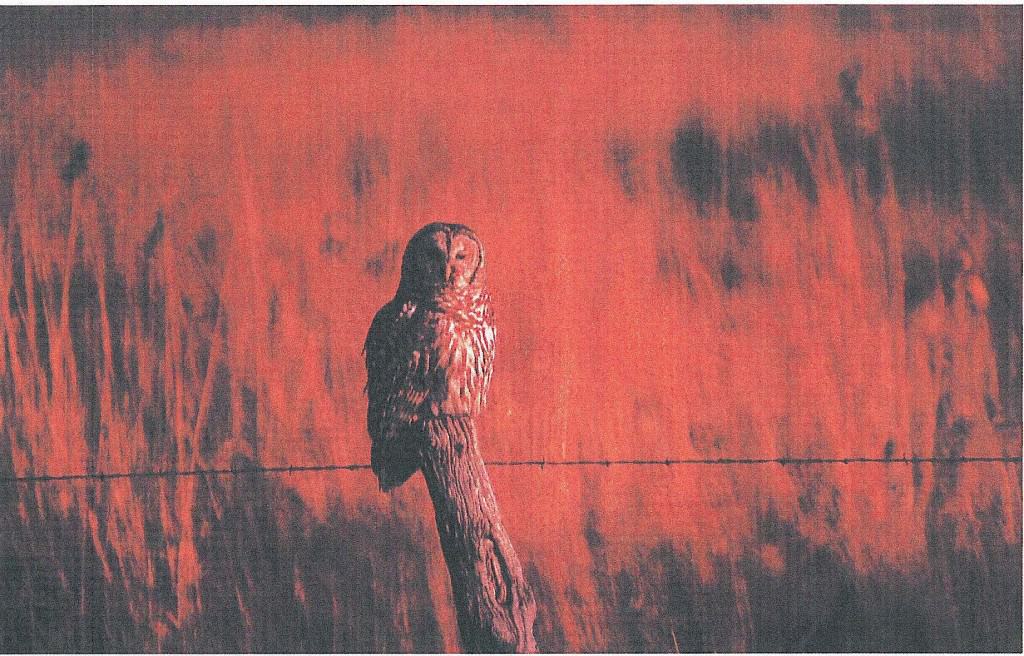
102.1 Barred Owl in the Tallgrass Prairie at sunset
103. The bird life of each of these large coupled systems of remaining mixed or Tallgrass Prairie-the Flint Hills of Kansas and Oklahoma, the Nebraska Sandhills, the Prairie Coteau in South Dakota, and the Missouri Coteau in North Dakota is distinctive, reflecting their great latitudinal breadth and the diversity of grassland systems.
103.1 Partners in Flight, the collective effort in North America to bring about the conservation of landbirds, has identified the Flint Hills as critically important for the health of the avifauna of the mid continent.
103.2 Numerous neotropical and neoarctic grassland species depend upon the Flint Hills for nesting and/or as a spring and fall migratory habitat corridor, and/or as a wintering area.
103.3 The Flint Hills is the last north-south corridor of Tallgrass Prairie remaining in the Central Great Plains. In addition to the habitat provided at ground level, the winds and updrafts associated with these hills are undoubtedly another reason this is an important migratory corridor for birds.
104. Soaring birds such as hawks, eagles and vultures, are among the birds that are most evident in their daytime use of these winds and thermals associated with landscape features. The Flint Hills Tallgrass Prairie Regional Ecosystem hosts high winter and migratory populations of bald eagles and several species of hawks. Red-tailed hawks are resident nesters and the area has an exceptionally high summer population of Turkey Vultures.
104.1 The following photographic exhibit is a fair and accurate representation of a Red-tailed Hawk, one of the native raptors of the Flint Hills Tallgrass Prairie Regional Ecosystem.
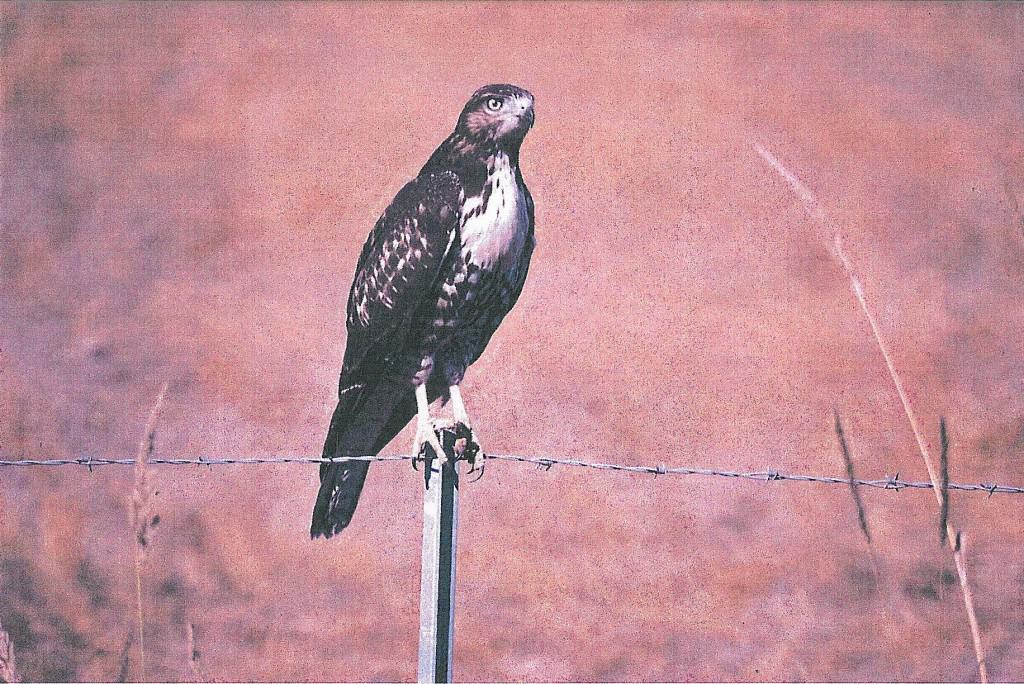
104.1 Red-tailed Hawk
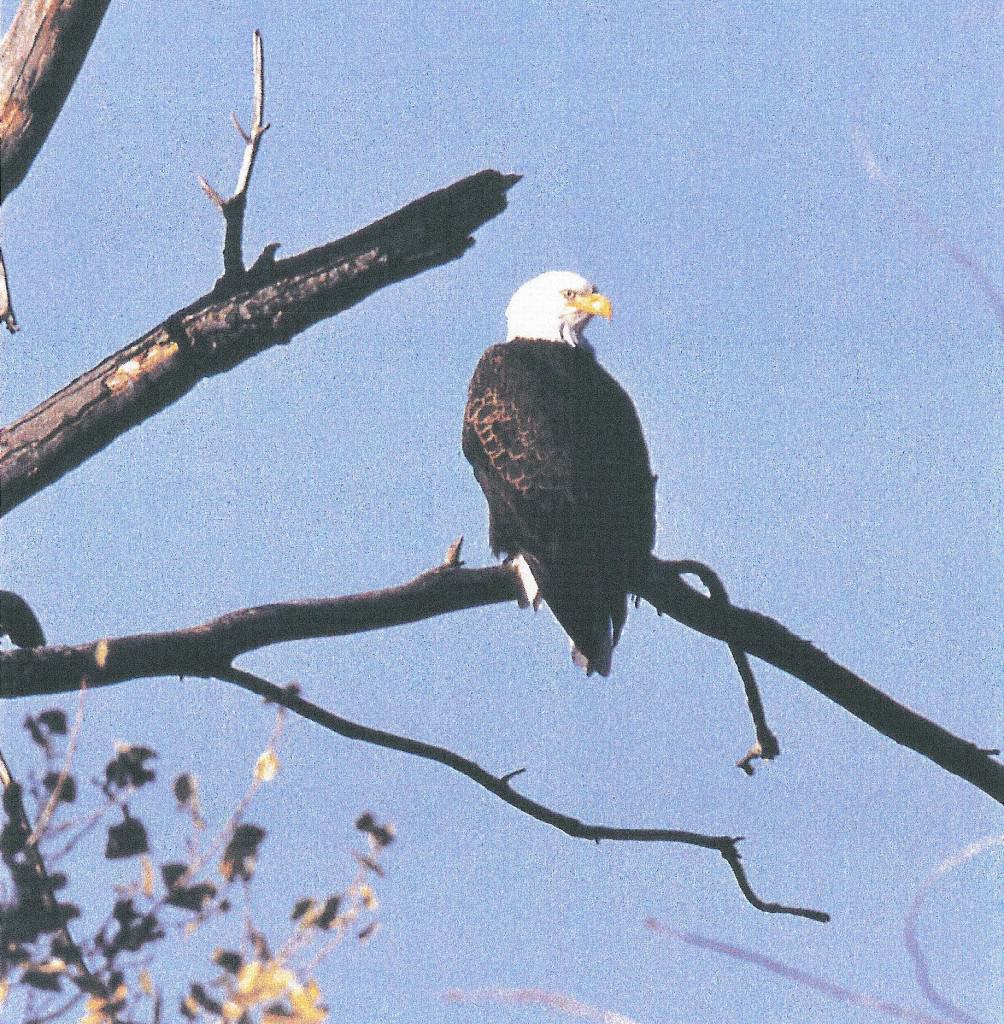
104.2 Bald Eagle
104.3 The following photographic exhibit is a fair and accurate representation of Turkey Vultures which are critical elements of the Flint Hills Tallgrass Prairie Regional Environmental System.
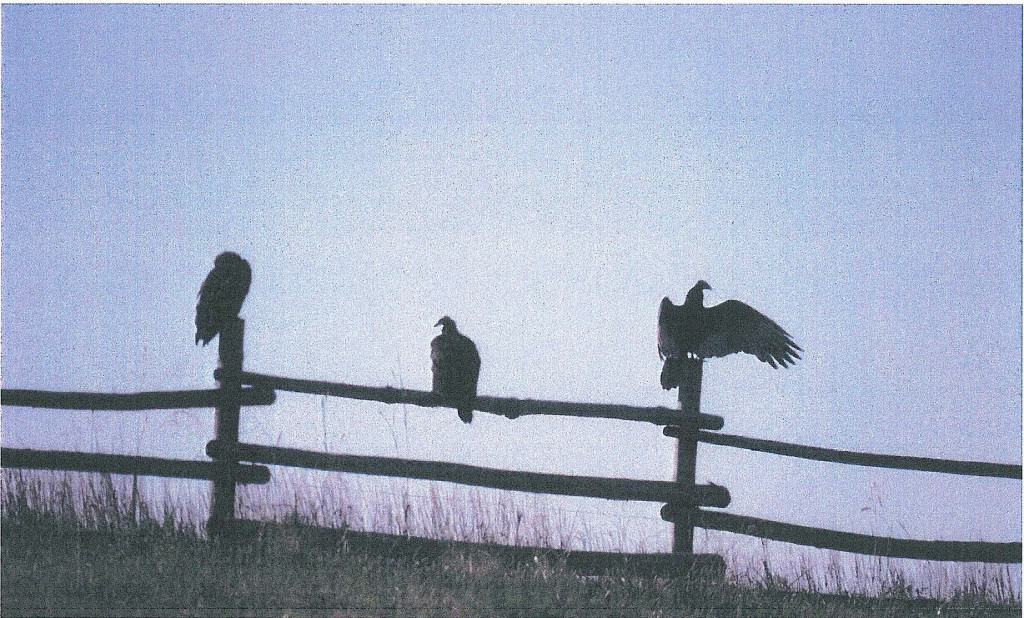
104.2 Turkey Vultures waiting…
105.1 The following photographic exhibit is a fair and accurate representation of an Upland Sandpiper indigenous to the Flint Hills Tallgrass Prairie Regional Ecosystem.

105.1 Upland Sandpiper
106.1 The following photographic exhibit is a fair and accurate representation of a male Greater Prairie Chicken, just one of the species of indigenous birds and animals that will suffer serious, permanent and irreparable damage as a result of the construction, operation and maintenance of industrial wind turbine commercial electric power generation facilities in the Flint Hills Tallgrass Prairie Regional Ecosystem.
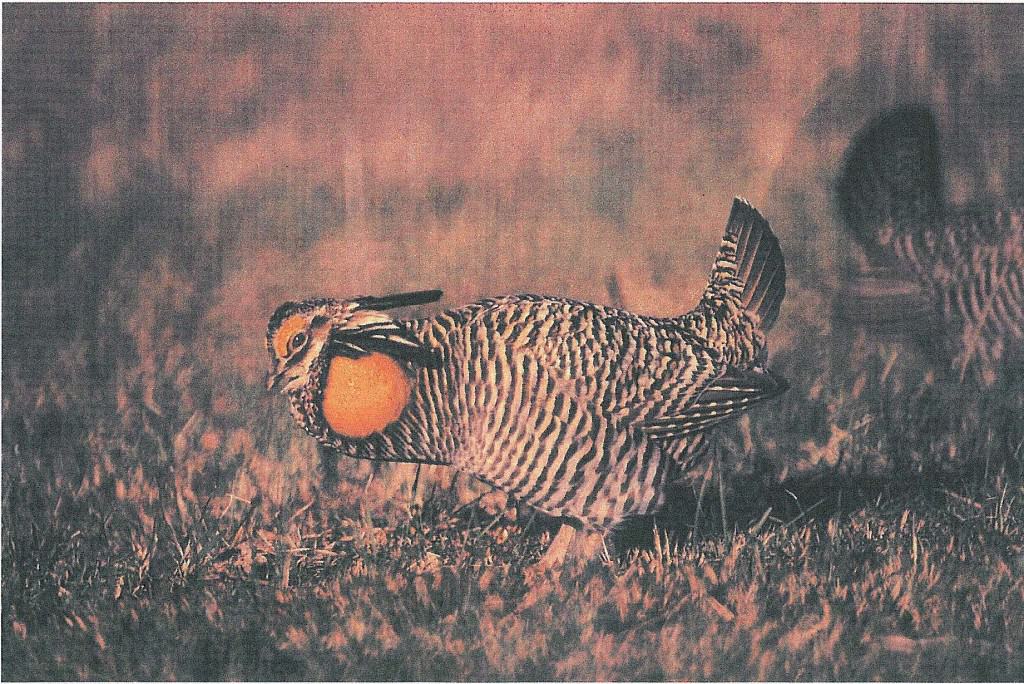
106.1 male Greater Prairie Chicken
101.1 Greater Prairie-chickens are sensitive to human disturbance just like all other prairie grouse. Tallgrass Prairie within a quarter-mile of a house is seldom used, as are areas near high-voltage powerlines and roads with heavy traffic. Thus, even though rural residences, high voltage lines and roads are not actually destroying much Tallgrass habitat, they are making areas uninhabitable for these birds.
101.2 Construction of a municipal water tower northwest of Manhattan, Kansas on a site that was historically used by Prairie-chickens as a lek has resulted in abandonment of the site. Now an electrical substation is planned for construction by Western Resources on adjacent land, and additional powerlines may soon be strung across a landscape that has previously been maintained as a natural prairie landscape. It is questionable whether other secure lek sites remain in the grassland complex that once supported this population of Prairie-chickens. Combined with other encroachments, it is likely that this population will vanish from the surrounding prairie landscape that was once thought to be secure with Kansas State University stewardship of the Donaldson Pastures serving as the centerpiece of the habitat.
107.3 In addition to the need for blocks of prairie habitat, it is important to protect at least three critical elements of habitat: nesting and brood rearing habitats, and communal courtship lek sites. Most of the prime lek sites in hilly terrain are on ridges and tablelands and the United States Fish & Wildlife Service has recommended that industrial wind turbine commercial electric power generation facilities should be sited at least five miles from established prairie grouse leks.
Please continue to the next section of the complaint, a detailed description of Tourism in the Flint Hills Tallgrass Prairie.
